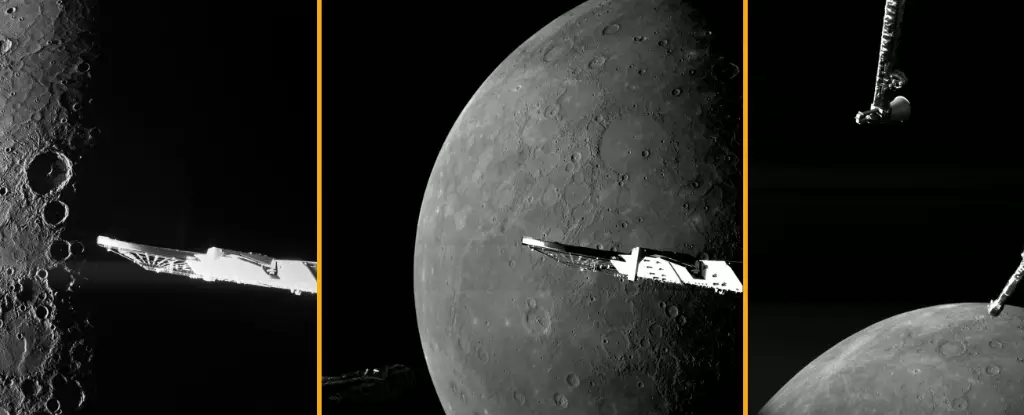Mercury, the innermost planet in our solar system, has long fascinated astronomers and space enthusiasts due to its extreme environment and enigmatic characteristics. Recently, the European Space Agency’s (ESA) BepiColombo probe concluded its final flyby of this curious world, providing breathtaking images that promise to unlock some of the long-standing mysteries surrounding Mercury. From a distance of just 295 kilometers above its surface, these close-up photographs reveal a planet of contrasts: regions of eternal darkness juxtaposed against sunlit crater rims, hinting at possible clues about its past and future.
As the BepiColombo mission progresses, leading scientists are eager to sift through the data collected during this flyby. Project Scientist Geraint Jones expressed optimism regarding the exploration results, stating, “The next few weeks will see our team rigorously analyzing the details from this encounter.” Even with the formal data collection not set to commence until 2027, the success of BepiColombo’s gravitational maneuvering has already provided invaluable insights into this little-known planet. The last flyby was crucial for setting the stage for future data collection and deeper scientific understanding.
Mercury’s unique positioning within the solar system shapes its challenges and characteristics. Orbiting at an average distance of about 58 million kilometers (36 million miles) from the Sun, the planet experiences extreme temperatures, with scorching highs of up to 430 degrees Celsius (over 800 degrees Fahrenheit) during the day. In stark contrast, the absence of a significant atmosphere allows nighttime temperatures to plummet to a frigid minus 180 degrees Celsius. The atmosphere itself is almost non-existent, being insubstantial and only refreshed through the impacts of meteorites which contribute gases to its thin exosphere.
Moreover, the peculiarities of Mercury extend beyond temperature extremes. The planet exhibits a mysterious magnetic field and harbors a potential treasure trove of carbon, indicated to possibly exist in diamond form below its surface. Adding to this intrigue are theories suggesting that Mercury may be gradually shrinking, hinting at complex geological processes that warrant further investigation.
Launched in October 2018, BepiColombo is a collaborative endeavor between the ESA and the Japan Aerospace Exploration Agency (JAXA). This ambitious mission aims to explore various aspects of Mercury, including its magnetic field, exosphere, and intriguing surface features. BepiColombo’s array of instruments promises to unveil previously hidden secrets that could explain the planet’s oddities and contribute to our understanding of planetary formation and evolution in extreme conditions.
Past encounters with Mercury have already provided glimpses into its less-traveled terrain. Remarkable images of the planet’s geology depict ancient volcanic activity and significant impact sites. Features like the Nathair Facula, indicating Mercury’s largest volcanic explosion marked by a broad vent, showcase the planet’s volcanic history, while the relatively young Fonteyn crater—formed merely 300 million years ago—indicates ongoing processes shaping Mercury’s landscape.
Looking Ahead: What’s Next for BepiColombo?
The next major milestone for BepiColombo will occur in 2026 when its Mercury Transfer Module is scheduled to release two dedicated orbiters: the ESA’s Mercury Planetary Orbiter and JAXA’s Mercury Magnetospheric Orbiter. Each spacecraft is designed to collect and analyze data from unique altitudes and perspectives above the planet, promising to expand our knowledge of this harsh environment in unprecedented detail.
While neither orbiter will venture closer than 480 kilometers from the surface, the collected data will provide an invaluable wealth of information, making it possible to develop a more comprehensive understanding of Mercury’s complex nature. As we continue to study the insights returned from BepiColombo, our grasp of this hellish world will evolve, paving the way for future explorations of Mercury and other celestial bodies. By piecing together the data gathered from these missions, scientists hope to shed light on the processes that govern not just Mercury but also planetary development across the solar system.


Leave a Reply